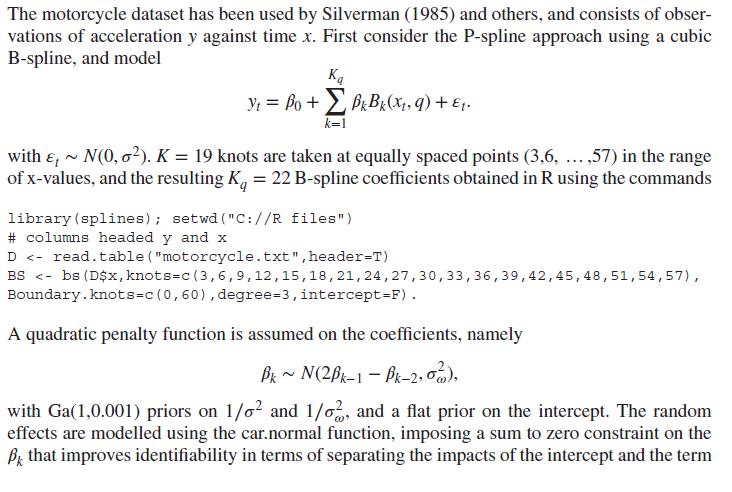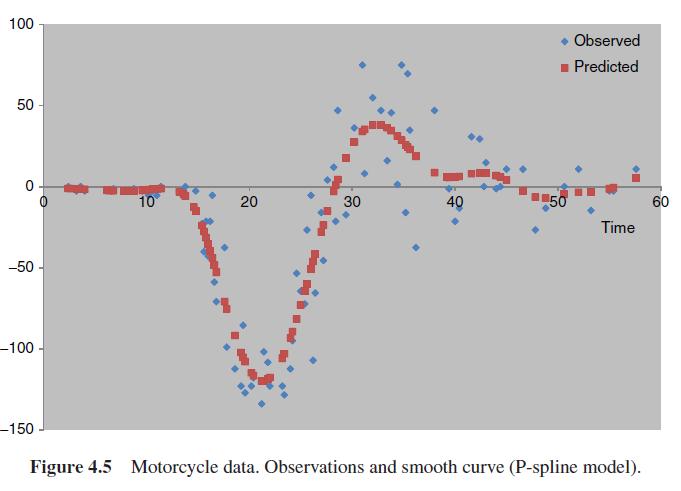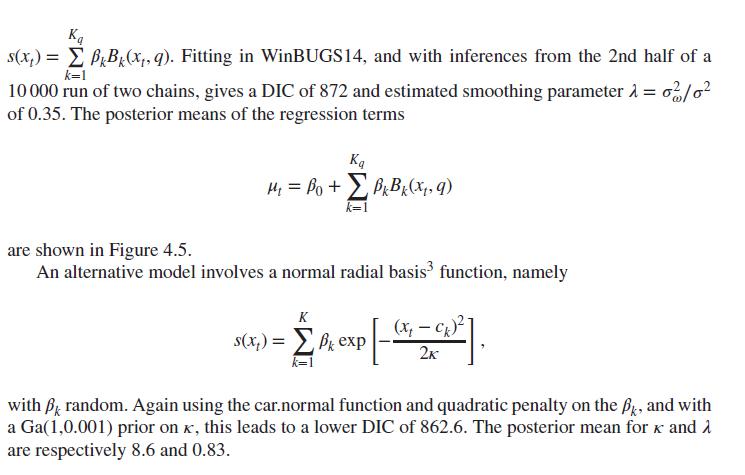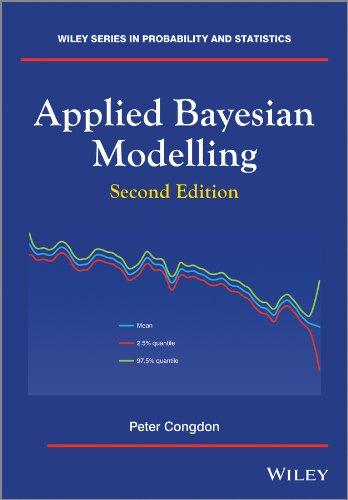In Example 4.7 (motorcycle data) use a one-dimensional thin plate spline function with random coefficients to model
Question:
In Example 4.7 (motorcycle data) use a one-dimensional thin plate spline function with random coefficients to model the non-linear effect. Use the mixed replicate predictive scheme to assess the proportion of poorly fitted cases (e.g. posterior predictive probabilities that \(y_{i}\) exceeds \(y_{\text {rep }, i}\) that are under 0.05 or over 0.95 ). Assess improvements to predictive fit through
(a) replacing the constant varance assumption for \(\varepsilon_{t}\) by a scale mixture of normals (equivalent to Student \(t\) ) with unknown degrees of freedom, and
(b) modelling the error variances \(h_{t}=\log \left(\sigma_{t}^{2}\right)\) in relation to \(x_{t}\), also using a thin plate spline.
Data from Example 4.7


Fantastic news! We've Found the answer you've been seeking!
Step by Step Answer:
Related Book For 

Question Posted:





